
PROGRESS IN SURFACE SCIENCE
Scope & Guideline
Fostering Excellence in Surface Science Scholarship
Introduction
Aims and Scopes
- Nanoscale Friction and Dynamics:
Research focusing on the mechanisms and control of friction at the nanoscale, including the structural dynamics of materials, is a core area. This includes novel techniques such as time-resolved scanning tunneling microscopy to study surface interactions. - Ultrafast Phenomena:
The journal emphasizes ultrafast processes in surface science, including charge carrier dynamics and magnetization control. This reflects a commitment to exploring rapid phenomena that occur on femtosecond to picosecond timescales. - Electronic and Photonic Interactions:
A significant focus on the interactions between electrons and photons at surfaces, including plasmonics and topological states, showcases the journal's contribution to understanding quantum materials and their applications. - Material Interfaces and Growth:
Research on the growth and characterization of novel materials, such as 2D materials and heterostructures, highlights the journal's dedication to exploring new interfaces and their properties. - Experimental Techniques:
The journal promotes innovative experimental techniques in surface science, including spectromicroscopy and scanning tunneling microscopy, which are essential for probing surface phenomena at atomic resolution.
Trending and Emerging
- Quantum Materials and Topological States:
There is a growing emphasis on quantum materials, particularly topological insulators and their unique electronic properties. This trend is critical as it aligns with the broader research focus on quantum computing and advanced electronic devices. - Plasmonics and Hot Electron Dynamics:
Research into plasmonics, including the decay of plasmons into hot electrons, is gaining momentum, highlighting its significance in optoelectronic applications and energy conversion technologies. - Ultrafast Control Techniques:
The exploration of ultrafast techniques for controlling magnetization and charge dynamics is emerging as a significant theme, indicating a shift towards real-time manipulation of material properties on ultrafast timescales. - 2D Materials and Heterostructures:
The investigation of two-dimensional materials and their heterostructures is increasingly prominent, reflecting the material's potential for novel applications in electronics, photonics, and beyond. - Interfacial Engineering:
The engineering of interfaces and defects in materials is a trending topic, as it plays a crucial role in enhancing material properties and performance in various applications.
Declining or Waning
- Traditional Surface Characterization Methods:
While still relevant, traditional techniques for surface characterization have become less prominent as more advanced and rapid methods, such as ultrafast and time-resolved techniques, gain traction. - General Reviews on Surface Science:
The frequency of broad review articles covering general surface science topics is decreasing, indicating a shift towards more specialized and cutting-edge research that delves deeper into specific phenomena. - Applications in Non-Quantum Materials:
Research focused on classical materials or applications not directly related to quantum phenomena appears to be waning, as the field increasingly centers on quantum materials and their unique properties.
Similar Journals
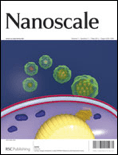
Nanoscale
Elevating Research Standards in Nanotechnology.Nanoscale is a premier academic journal published by the Royal Society of Chemistry, dedicated to advancing the field of nanoscience and nanotechnology. With both its ISSN (2040-3364) and E-ISSN (2040-3372) ensuring wide accessibility, the journal is renowned for its high-impact research contributions, reflected in its impressive 2023 Impact Factor and prestigious Q1 ranking in both Materials Science (Miscellaneous) and Nanoscience and Nanotechnology categories. Since its inception in 2009, Nanoscale has fostered a collaborative platform where leading researchers from around the globe share their innovative findings across a multitude of topics spanning from material synthesis to applications in nanotechnology. The journal not only serves as a valuable resource for professionals, researchers, and students but also actively engages the academic community in discussing emerging trends, thus shaping the future of nanoscience. Situated in the heart of the UK at Thomas Graham House, Science Park, Milton Rd, Cambridge CB4 0WF, Nanoscale remains a key publication for those looking to keep abreast of the latest breakthroughs in an ever-evolving field.

JOURNAL OF MATERIALS SCIENCE-MATERIALS IN ELECTRONICS
Advancing the Frontiers of Materials in ElectronicsJOURNAL OF MATERIALS SCIENCE-MATERIALS IN ELECTRONICS, published by Springer, is a distinguished international journal that serves as a vital platform for the dissemination of cutting-edge research in the field of materials science, with a keen focus on electronics. Since its inception in 1990, this journal has consistently contributed to the advancement of knowledge across a range of interdisciplinary categories, including Atomic and Molecular Physics, Optical and Magnetic Materials, and Biomedical Engineering, achieving notable quartile positions in various 2023 Scopus rankings. With an impact factor that signifies its scholarly influence, this journal provides a rigorous peer-reviewed environment for researchers and practitioners to share innovative ideas, experimental findings, and theoretical developments. Although it does not currently offer open access options, the depth and breadth of topics covered—including condensed matter physics and bioengineering—make it an essential resource for those at the forefront of materials research. With a commitment to bridging the gap between theory and practical application, the JOURNAL OF MATERIALS SCIENCE-MATERIALS IN ELECTRONICS continues to pave the way for future explorations in the ever-evolving landscape of materials science.

CHEMICAL PHYSICS LETTERS
Pioneering Insights in Physical and Theoretical ChemistryCHEMICAL PHYSICS LETTERS, published by Elsevier, is a prestigious journal that has been at the forefront of advancing knowledge in the fields of physical and theoretical chemistry and physics since its inception in 1967. With an impressive impact factor reflective of its high-quality research output, this journal holds Q2 quartile rankings in both the Physical and Theoretical Chemistry and Physics and Astronomy categories for 2023. It is recognized as a key platform for disseminating groundbreaking findings, with Scopus rankings placing it within the top 76th and 66th percentiles in its respective categories. Researchers and professionals benefit from its insightful contributions and rigorous peer-review process, making it an essential resource for those engaged in cutting-edge chemical physics studies. Although the journal is not open access, it remains accessible through various institutional subscriptions, ensuring that a wide audience can explore its wealth of knowledge. Located in Amsterdam, Netherlands, the journal continues to drive innovation and collaboration across diverse scientific disciplines.
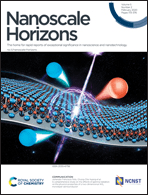
Nanoscale Horizons
Advancing Knowledge at the Nanoscale FrontierNanoscale Horizons is an esteemed journal published by the Royal Society of Chemistry, focusing on cutting-edge research in the field of nanoscale materials and their applications. Established in 2016, this journal quickly gained prominence, achieving a Q1 ranking in Materials Science (miscellaneous) and a notable rank of #32 out of 463 in the Scopus index, placing it in the 93rd percentile among its peers. With its rigorous peer-review process and commitment to disseminating high-impact research, Nanoscale Horizons serves as a vital platform for sharing innovative discoveries and interdisciplinary advancements. Researchers and professionals are invited to explore the exciting developments in nanotechnology through this publication, fostering collaboration and knowledge exchange in an ever-evolving field. Though currently not open access, the journal ensures that significant research findings are made available to a diverse audience keen on advancing materials science.
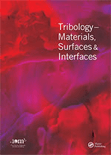
Tribology-Materials Surfaces & Interfaces
Transforming tribological insights into practical applications.Tribology-Materials Surfaces & Interfaces is a leading journal dedicated to advancing the field of tribology, leveraging insights into materials, surfaces, and interface interactions. Published by SAGE Publications Inc in the United Kingdom, this journal plays a pivotal role in disseminating high-quality research, providing a platform for both foundational and applied studies in mechanical engineering and materials science. With an impact factor reflecting its significance, ranking in the third quartile for both Materials Science and Mechanical Engineering, it caters to a diverse audience including researchers, industry professionals, and students. Although it currently does not offer open access, the journal endeavors to periodically review and publish innovative studies that enhance understanding of tribological phenomena, thereby contributing to the development of advanced materials and engineering solutions. Since its inception in 2007, Tribology-Materials Surfaces & Interfaces has consistently presented cutting-edge findings, thereby cementing its position as an essential resource for anyone engaging in tribological research.

Surface Topography-Metrology and Properties
Fostering collaboration in the realm of surface metrology and materials.Surface Topography-Metrology and Properties is an esteemed journal published by IOP Publishing Ltd, dedicated to advancing the field of surface metrology and its interrelation with material properties. With an ISSN of 2051-672X, this journal serves as a pivotal platform for researchers, professionals, and students engaged in the study of surfaces and coatings, particularly in disciplines such as Instrumentation, Materials Chemistry, and Process Chemistry and Technology. The journal maintains a strong academic presence with notable Category Quartile rankings, including Q2 in Materials Chemistry and Surfaces, Coatings and Films, and Q3 in other relevant fields. Although the journal operates under a subscription model, it offers valuable insights and findings that are crucial for advancing technologies reliant on surface characteristics and functionalities. Since its inception in 2013, the journal has continued to publish high-quality research up to the present day, catering to the ongoing needs of the scientific community and contributing significantly to the discourse in surface science.
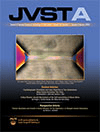
JOURNAL OF VACUUM SCIENCE & TECHNOLOGY A
Advancing the Frontiers of Vacuum Science.JOURNAL OF VACUUM SCIENCE & TECHNOLOGY A, published by the esteemed American Institute of Physics, is a leading journal in the field of materials science and applied physics, with an ISSN of 0734-2101 and an E-ISSN of 1520-8559. This publication serves as a vital platform for researchers and professionals focused on condensed matter physics, surfaces and interfaces, as well as coatings and films, contributing significantly to our understanding of vacuum technology and its applications. With a commendable Q2 ranking in key categories such as Condensed Matter Physics and Surfaces and Interfaces, the journal showcases rigorous research that pushes the boundaries of science and technology. The journal is particularly noted for its impact within the community, holding impressive Scopus rankings that highlight its relevance and influence. Although not an Open Access journal, it remains a crucial resource for academics seeking high-quality, peer-reviewed articles from 1970 through 2024. We invite you to explore the latest advancements and innovative findings that this journal presents, positioning you at the forefront of research in vacuum science.

Physics and Chemistry of Solid State
Transforming Ideas into Breakthroughs in Solid-State ResearchPhysics and Chemistry of Solid State is a distinguished open access journal published by Vasyl Stefanyk Precarpathian National University in Ukraine, dedicated to advancing research in the fields of condensed matter physics, materials science, and physical and theoretical chemistry. Since its inception in 2000, the journal has provided a platform for the dissemination of innovative ideas and original research findings, contributing significantly to the global scientific community. With a variety of access options, it facilitates the sharing of knowledge and collaboration among researchers worldwide. The journal has garnered recognition with respectable rankings in Scopus, positioning itself among the significant publications in its domain, particularly noted for its contributions to materials science and condensed matter physics. As it moves through its converged years from 2018 to 2024, Physics and Chemistry of Solid State aims to foster interdisciplinary dialogue and prepare the next generation of scientists to tackle complex challenges in solid-state research.

PHYSICS OF THE SOLID STATE
Fostering Innovation in the Physics of the Solid StatePhysics of the Solid State is a distinguished journal published by Pleiades Publishing Inc., focusing on the rapid advancements and fundamental research in the realms of condensed matter physics, electronic, optical, and magnetic materials. With an ISSN of 1063-7834 and an E-ISSN of 1090-6460, this journal serves as a crucial platform for disseminating high-quality research findings, insights, and reviews essential for both academic and industrial professionals in the field. As of 2023, its Scopus ranking places it in the 26th percentile for both Condensed Matter Physics and Electronic, Optical and Magnetic Materials, reflecting its evolving influence and contribution to the scientific community. Although currently classified in the Q4 quartile, the journal aims to foster interdisciplinary dialogue, improve research visibility, and enhance its impact on contemporary scientific challenges through rigorous peer-reviewed articles and focused special issues. Despite its traditional model of access, it continues to play a pivotal role in engaging researchers and fostering innovation in solid-state physics.
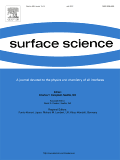
SURFACE SCIENCE
Bridging Disciplines in Condensed Matter PhysicsSURFACE SCIENCE is a prominent journal in the fields of Condensed Matter Physics, Materials Chemistry, and Surface Engineering, published by Elsevier in the Netherlands. With an ISSN of 0039-6028 and an E-ISSN of 1879-2758, the journal encompasses a wide range of research related to the physical and chemical properties of surfaces and interfaces, serving as a valuable resource for researchers, professionals, and students alike. As of 2023, it holds a Q3 ranking across multiple categories, indicating its significant contribution to its respective fields, despite room for improvement in its overall impact within the scientific community. Researchers will find that SURFACE SCIENCE provides a platform for innovative and interdisciplinary studies, making it essential for those looking to stay updated on emerging trends and technologies in surface science. While the journal is currently not open access, its reputation and robust indexing reinforce its importance in advancing scientific knowledge and fostering new discoveries.